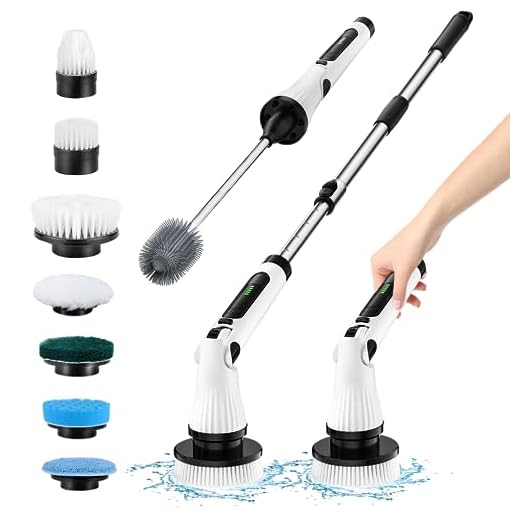
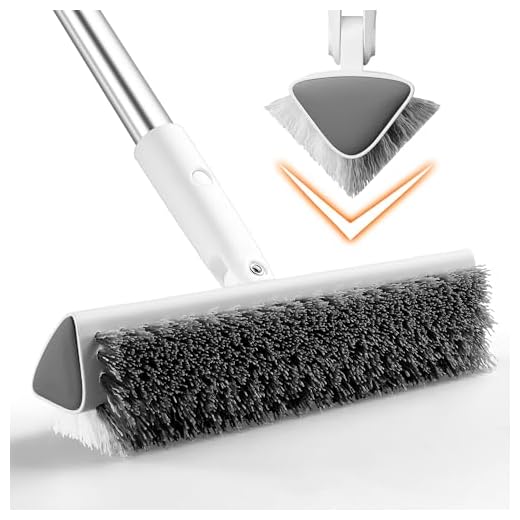
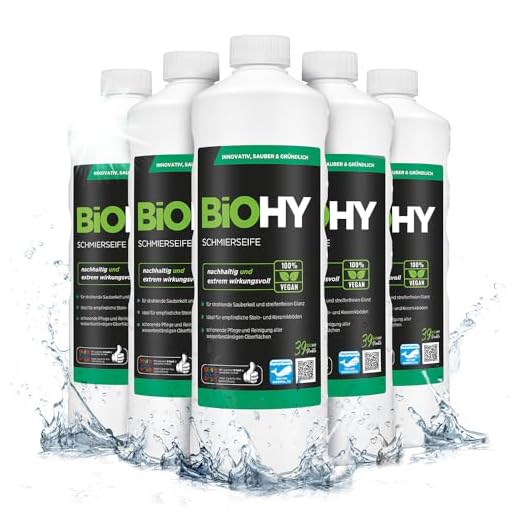

Mix one part white vinegar with one part water in a spray bottle to create a natural solution that tackles grime. Spray this mixture generously on the targeted areas, allowing it to sit for about 15 minutes to loosen dirt.
For enhanced scrubbing power, sprinkle baking soda onto the surface before using a stiff-bristled broom or brush. This combination will not only assist in breaking down stubborn stains but also neutralise any unpleasant odours.
After scrubbing, rinse the surface thoroughly with a garden hose. A steady stream of water will wash away residue and debris, leaving your outdoor space looking refreshed without requiring heavy machinery.
Consider incorporating a mixture of dish soap and warm water for routine upkeep. Using a mop or cloth, apply this solution to remove everyday dirt while protecting the surface from long-term wear.
As seasons change, regularly inspect the space for growth of moss or mildew, especially in shaded areas. A diluted bleach solution can effectively eradicate these nuisances. Just remember to apply it on a cloudy day to prevent quick evaporation.
Consistency in maintaining your outdoor area is key to preserving its charm and inviting atmosphere. Follow these simple steps to ensure that your space remains a pleasant retreat for years to come.
Cleaning Your Outdoor Surface Effectively
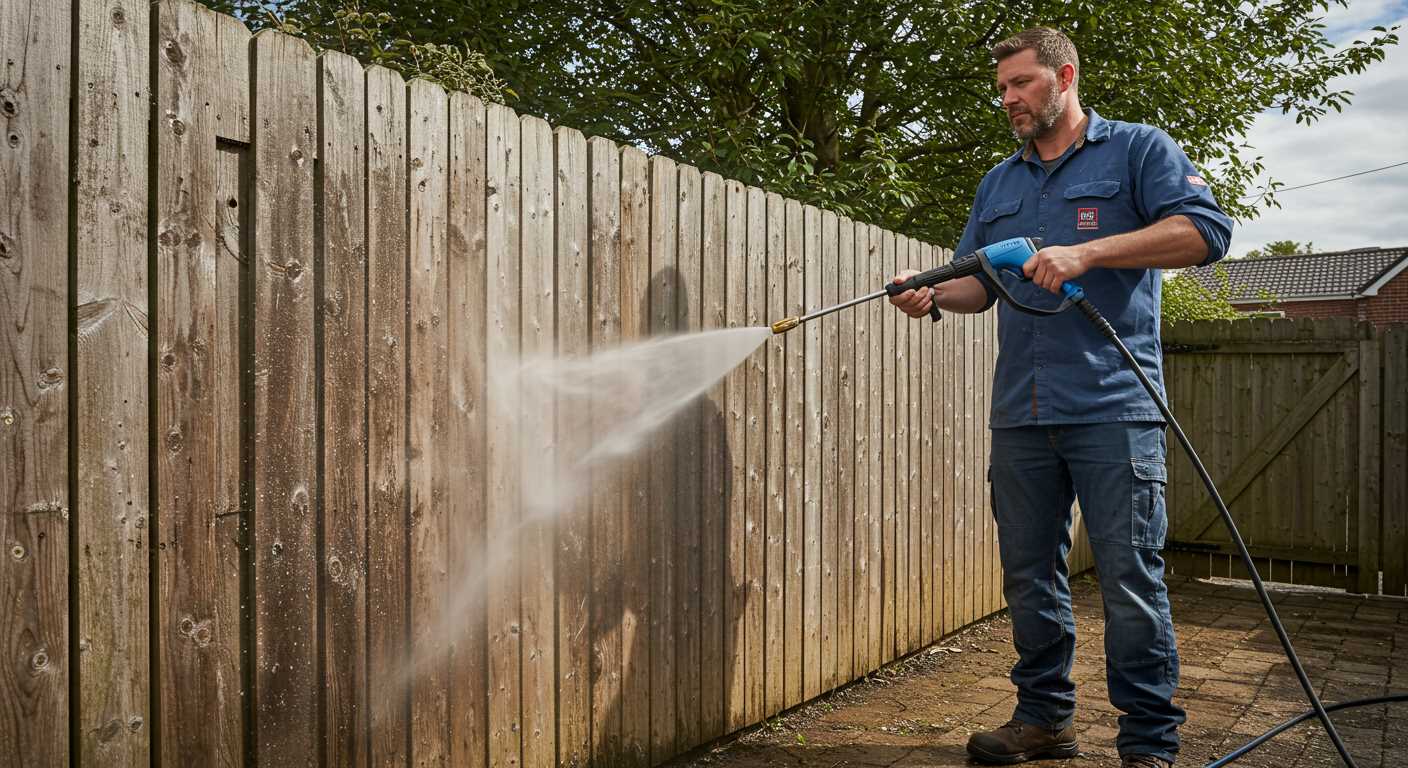
Use a solution of warm water mixed with a few drops of dish soap. This combination works wonders on grime and stains. Apply it using a stiff-bristle broom or scrubbing brush. Scrub in circular motions for a thorough approach.
Steps for an Optimal Approach
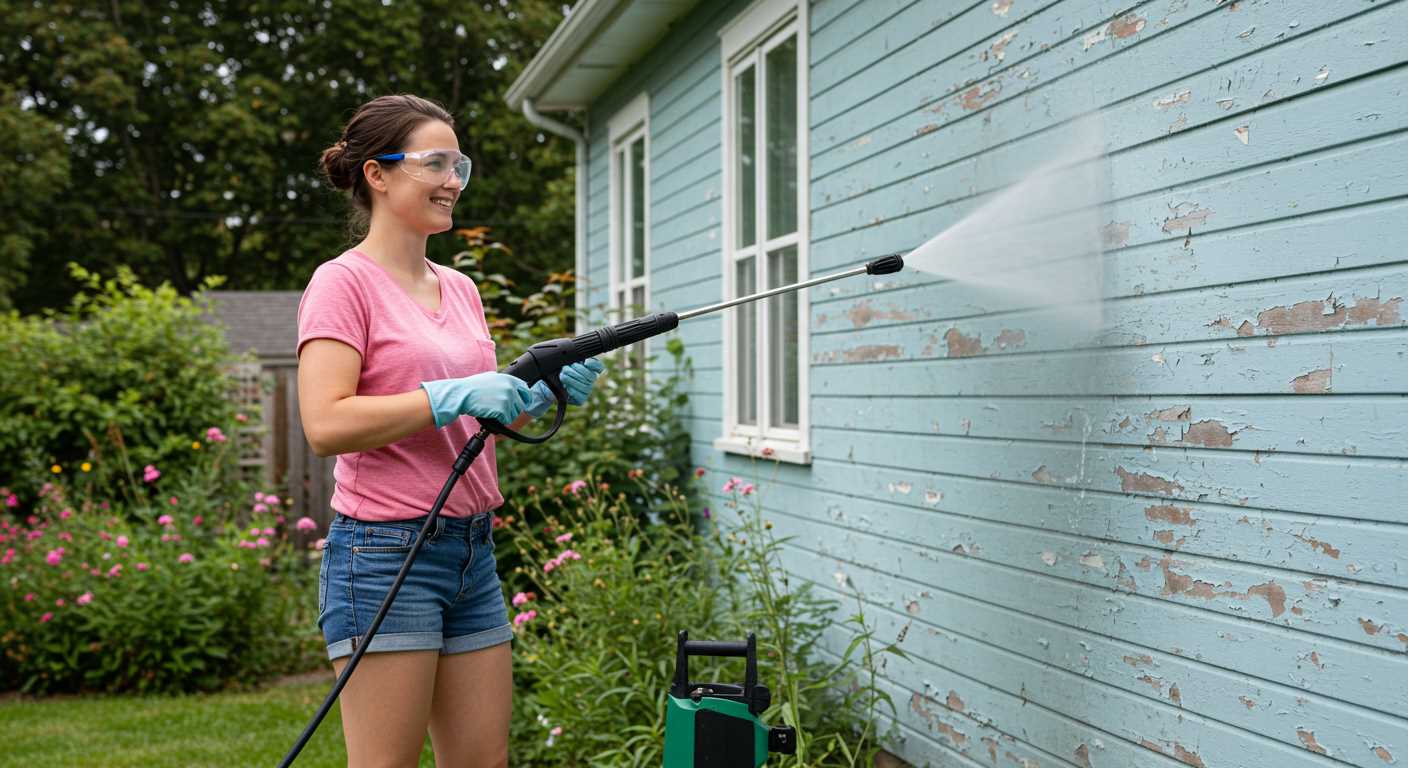
- Gather your tools: broom, bucket, sponge, and rubber gloves.
- Mix the soap solution in a bucket, ensuring it’s well integrated.
- Saturate the hard surface with your cleaning mixture using a sponge.
- Scrub sections, focusing on stained spots to dislodge dirt.
- Rinse with clean water, using a hose or a watering can to avoid oversaturation.
Additional Tips for Stubborn Stains
- For oil or grease marks, sprinkle baking soda over the area, let it sit, and then scrub.
- Vinegar can break down mildew effectively; spray it directly and scrub afterward.
- A mixture of bleach and water can eliminate mould; ensure proper ventilation and protective gear.
Finish by rinsing thoroughly to prevent residue build-up which can attract more dirt. Regular maintenance will keep your surfaces looking their best with minimal effort.
Choosing the Right Cleaning Supplies for Patio Floors
The key to maintaining outdoor surfaces lies in selecting appropriate cleaning agents. For a quick and effective clean, opt for a mild detergent mixed with warm water. This combination breaks down dirt and grime without damaging the surface textures.
For tougher stains and algae, consider a solution containing white vinegar or baking soda. Vinegar is a natural disinfectant, and baking soda acts as an abrasive that helps lift stubborn marks. Mix either of these with water; the result will be a powerful yet gentle cleaner.
When it comes to scrubbing tools, a stiff-bristled brush is essential. Look for one that is durable, able to withstand rigorous use without shedding bristles. For expansive areas, a deck brush with a long handle can save you time and effort.
Don’t overlook the importance of safety gear. Gloves protect your hands from any harsh chemicals, while non-slip footwear ensures your safety while working on wet surfaces. This preparation is crucial to avoid accidents.
Lastly, consider using a squeegee post-cleaning. This tool aids in removing excess water, preventing the growth of mould or mildew in the future. It’s an often-missed step that can greatly enhance the longevity of your surfaces.
Preparing the Patio Surface Before Cleaning
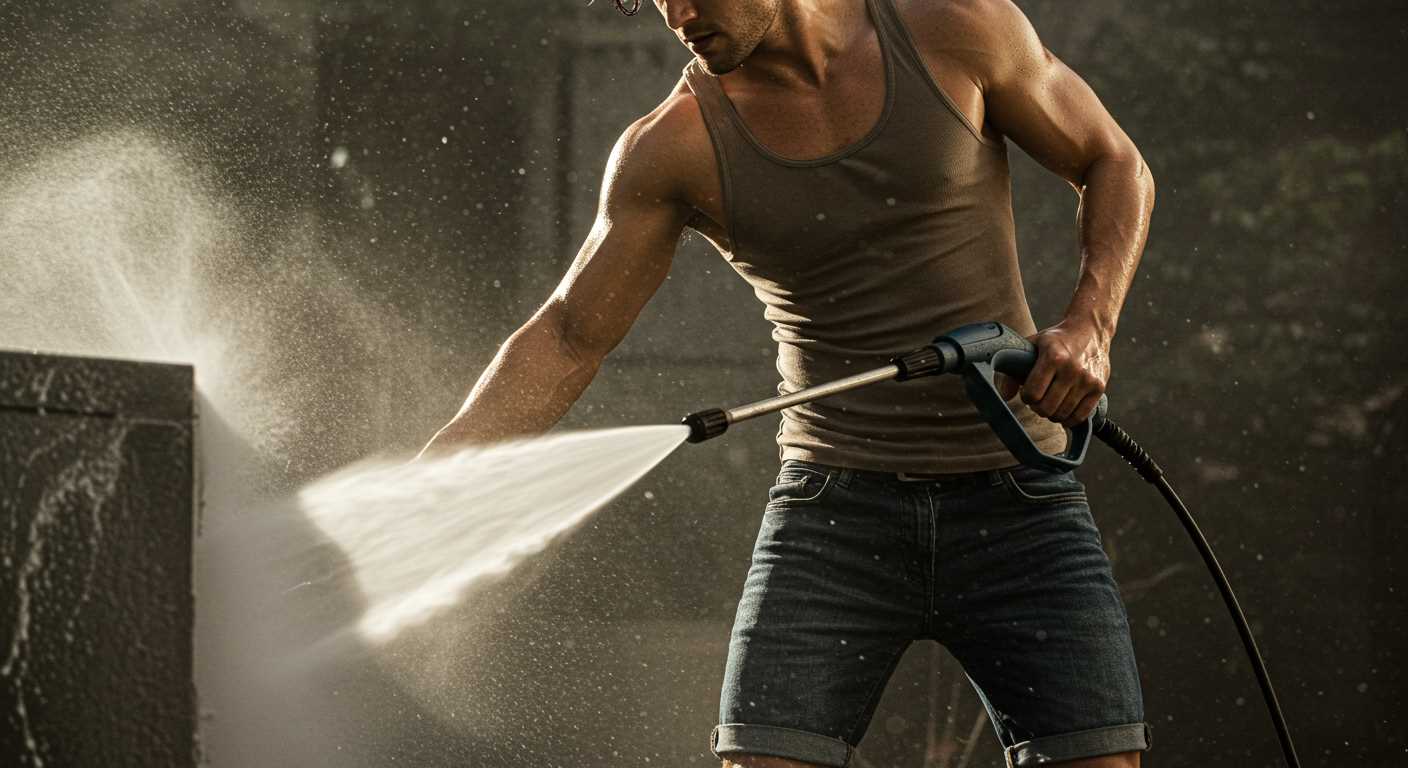
Remove all furniture, pots, and any other items from the area to ensure a clear workspace. This allows for thorough access to every inch of the surface, avoiding missed spots.
Next, sweep away loose dirt, leaves, and debris using a broom or a leaf blower. Accumulated debris can trap moisture and cause staining or mould growth, so it’s essential to eliminate it before performing any washing.
Inspect the area for any signs of damage, such as cracks or loose tiles. Repairing these issues beforehand prevents water and cleaning solutions from penetrating and worsening the condition.
If there are any stains or specific areas of concern, pre-treat them with an appropriate stain remover. Let the solution sit for the recommended time to allow it to break down stubborn grime.
Finally, consider soaking the surface with water. This helps to loosen embedded dirt, making the subsequent cleaning steps more effective. Aim for a damp surface, but avoid puddles that may interfere with your cleaning supplies.
Natural Cleaning Solutions for Stone and Concrete
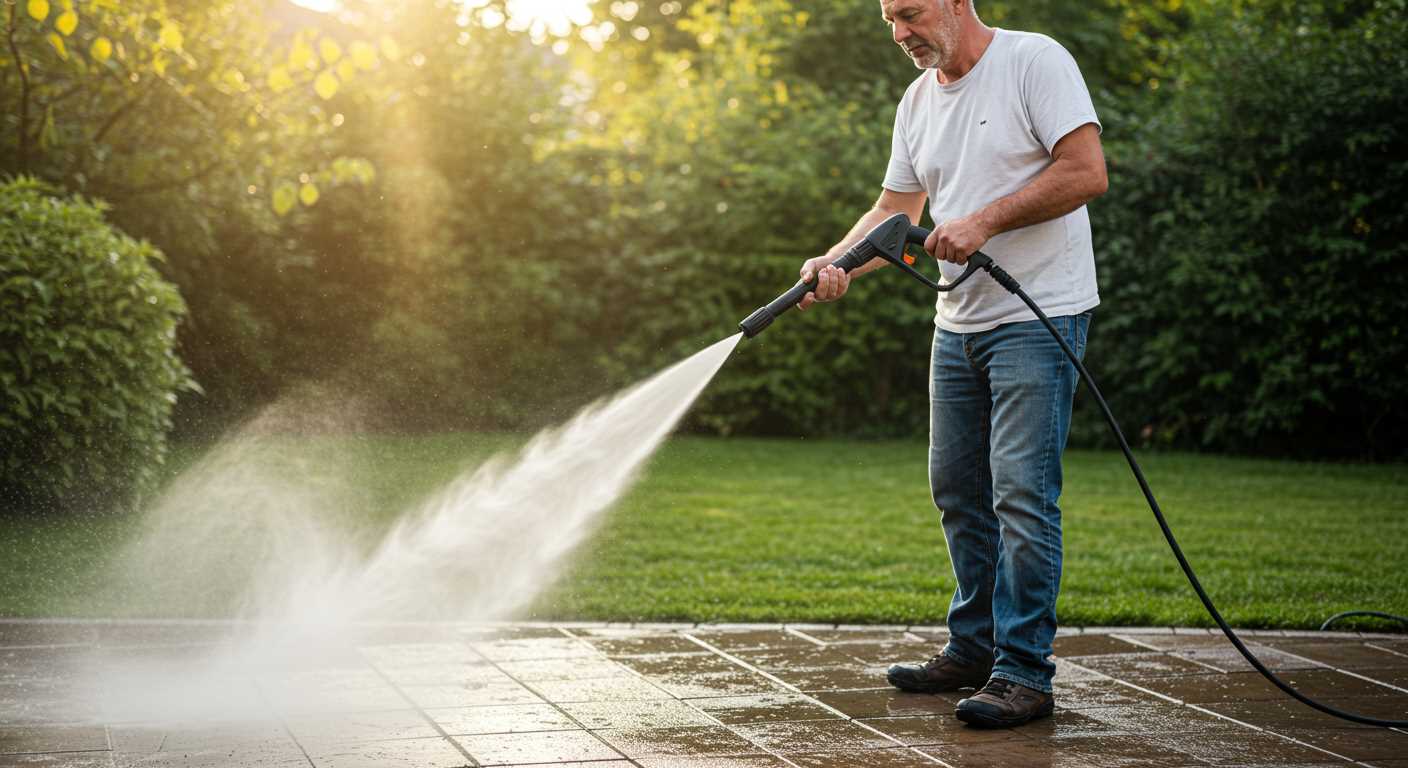
For effective removal of dirt and stains from stone and concrete surfaces, several natural mixtures can be utilised. Here are the top recommendations:
Baking Soda Paste
Combine baking soda with water to create a thick paste. Apply this mixture directly onto stubborn stains and let it sit for around 15-20 minutes. Scrub gently with a brush and rinse thoroughly with clean water.
Vinegar Solution
.jpg)
- Mix equal parts white vinegar and water in a spray bottle.
- Spray the solution onto the affected areas.
- Allow it to sit for about 10 minutes to help break down grime.
- Scrub with a stiff-bristled brush, then rinse.
Lemon Juice and Salt
A powerful duo for tackling stains is lemon juice combined with salt. Apply lemon juice to the stain and sprinkle salt over it. Let it sit for a few minutes before scrubbing and rinsing off.
Hydrogen Peroxide
- Use hydrogen peroxide, especially for organic stains.
- Apply it directly to the stain and let it sit for 10 minutes.
- Rinse with water after scrubbing.
Be mindful that acidic solutions like vinegar and lemon can affect the appearance of some porous materials. Always test on a small area first.
Regular application of these natural agents prevents deeper staining, keeping stone and concrete surfaces looking fresh for longer. Consistent maintenance will save time and effort in the long run.
Using a Broom and Mop for Basic Patio Cleaning
For routine maintenance, a broom and mop will effectively eliminate dirt and debris from your outdoor surfaces. First, utilise a stiff-bristled broom to sweep away leaves, dust, and loose particles. Make sweeping motions towards a designated area for easy disposal. Early mornings or late afternoons are optimal for this task, as the cooler temperatures reduce discomfort while you work.
Selecting the Right Broom
Choose a broom suited for outdoor use. Synthetic bristles can endure rough surfaces and resist moisture. For small grit trapped in rough textures, a push broom with a wider head can offer enhanced coverage. Ensure the broom’s handle is comfortable to grip and provides adequate reach for convenience.
Mopping Technique
After sweeping, it’s time for mopping. Use a mop head crafted from microfibre or cotton, which can capture more grime effectively. Prepare a bucket with warm water and your selected natural solution – a mix of vinegar and water works well. Soak the mop, wring it out to avoid excess liquid, and start mopping in sections, overlapping strokes to ensure full coverage. Pay attention to corners and edges where dirt often accumulates.
| Cleaning Supplies | Purpose |
|---|---|
| Stiff-bristled broom | Removal of loose debris |
| Push broom | Efficient sweeping of larger areas |
| Microfibre mop | Deep cleaning of surface |
| Natural cleaning solution (vinegar and water) | Non-toxic cleaning |
Finish the process by rinsing the mop frequently to avoid spreading dirt. Allow the surface to dry before placing any furniture back to prevent slipping hazards. Regular application of this method keeps your space tidy and inviting.
Dealing with Stubborn Stains on Outdoor Surfaces
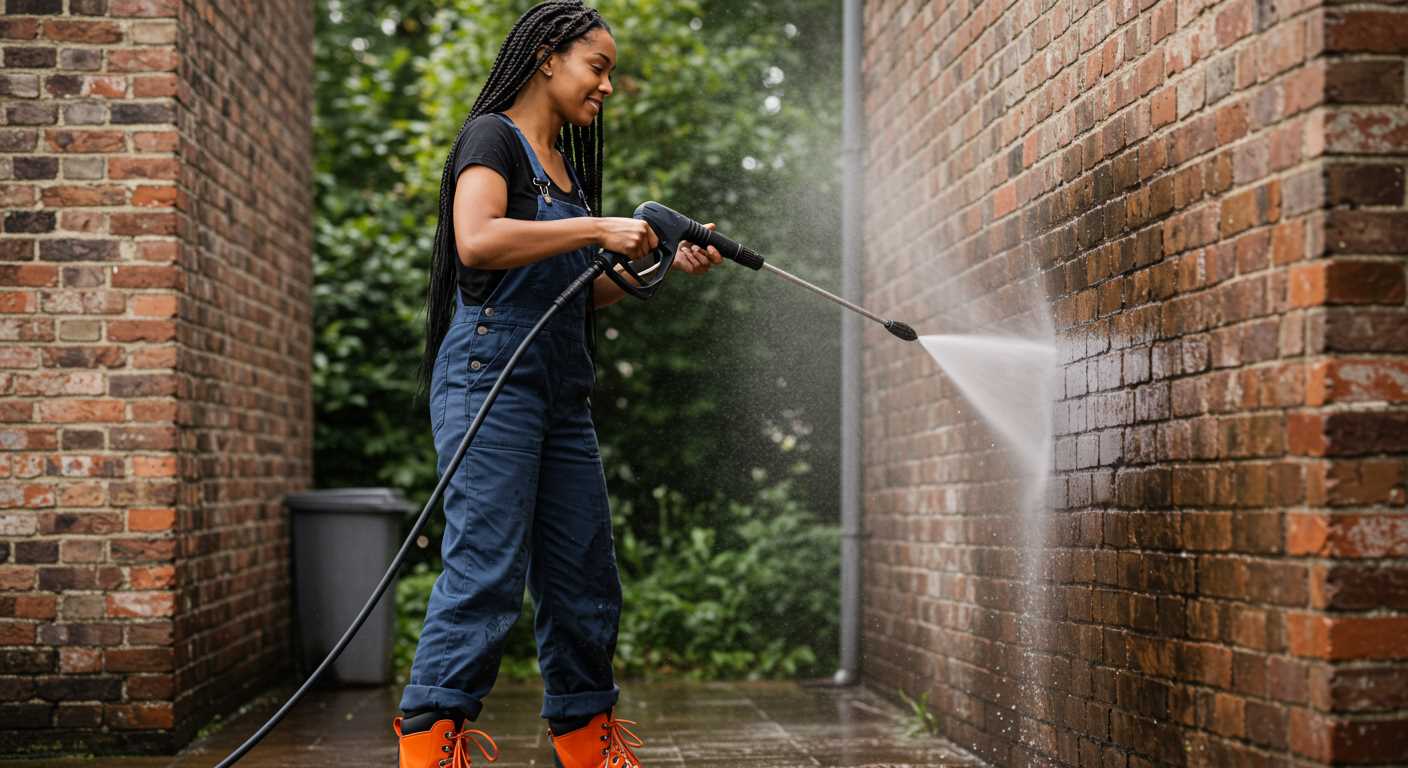
For persistent marks, begin by soaking the area first. Use warm water mixed with a few drops of dish soap. Let it sit for about 15 minutes to soften the stains. For oil and grease, apply a mixture of baking soda and water into a paste and spread it over the affected spot. This will help lift the residue.
Natural Solutions for Different Types of Stains
For rust stains, consider using lemon juice combined with salt. The acidity in the lemon, along with the abrasive nature of salt, breaks down rust effectively. Apply it, let it sit for a while, and then scrub gently with a soft-bristled brush.
If mould or mildew is an issue, vinegar can be particularly effective. Spray undiluted white vinegar directly onto the discoloured section and let it sit for at least an hour. Afterward, scrub with a stiff brush to remove the growth.
Mechanical Methods for Tough Stains
Use a nylon scrub pad or stiff-bristle brush for scrubbing those particularly refusing spots. Pairing physical scrubbing with cleaning agents usually yields the best results. For textured surfaces, a grout brush can reach into crevices better than typical scrubbing pads.
Don’t hesitate to repeat the process if necessary, applying more solution and retreating as needed. Patience is vital when tackling stubborn blemishes. Mixing different techniques might also lead to better outcomes, so feel free to adjust methods based on what you observe.
Maintaining a Clean Patio: Regular Cleaning Tips
Establish a routine schedule for upkeep, targeting specific times of the week or month based on usage patterns. This regularity greatly reduces the buildup of dirt and debris.
Begin by sweeping away loose leaves, dust, and dirt weekly. A sturdy broom is effective for this task, making it easier to manage surface material before deeper cleaning sessions.
After sweeping, consider performing spot cleaning periodically, especially after rain or windy days. This prevents stains from setting or moss from establishing itself in damp conditions.
Utilise a mixture of vinegar and water for routine maintenance. This natural solution is safe for most materials and effectively removes light grime without harsh chemicals.
Incorporate seasonal deep cleaning, ideally before major outdoor gatherings. This means allocating time for thorough scrubbing and treating any stains that have accumulated over months.
Allocate time quarterly to inspect for any wear or damage to the surface. Early detection of issues, like cracks or loose stones, allows for timely repairs and extends the lifespan of your structure.
Encourage drainage by ensuring that plant pots and furniture do not obstruct natural water flow. This simple habit prevents muddy patches and encourages quicker drying after rainfall.
Regularly check and clean any outdoor furniture and accessories that may sit on the surface. Dust and residue can transfer to the ground easily, requiring extra work during your cleaning routine.




